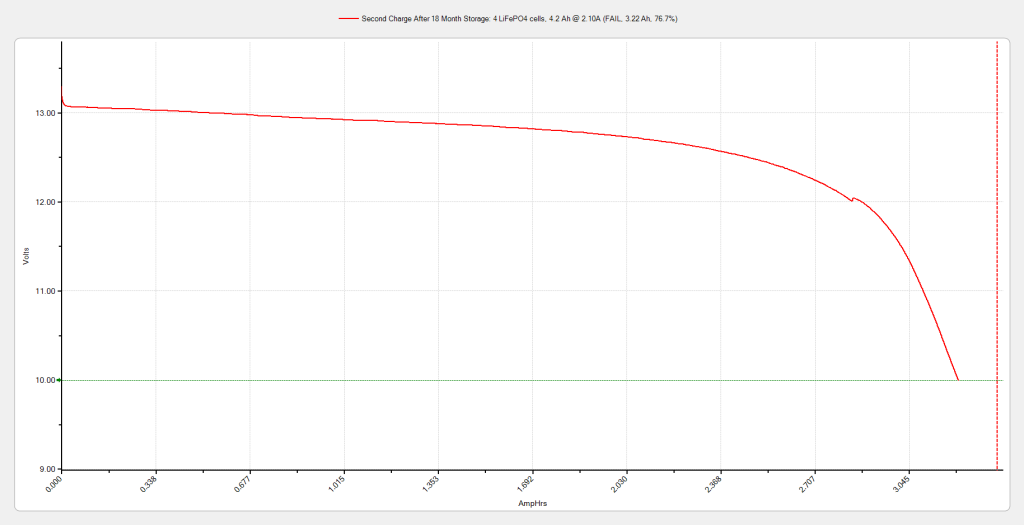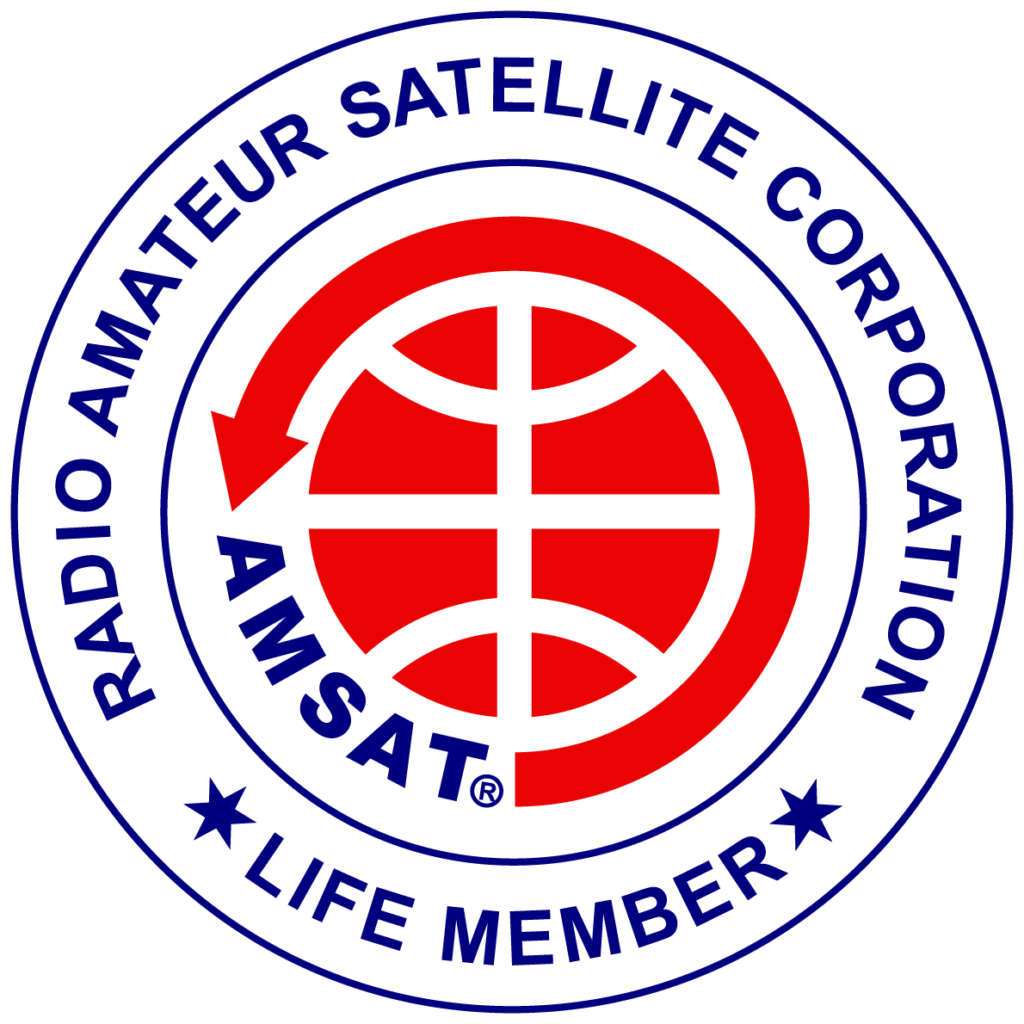A second charge cycle didn’t have much of an impact on the Zippy battery. It showed a capacity of 76.7%, which is still considered failing (< 80% of rated capacity). I carefully monitored the charge process, and couldn’t help but notice it was cutting off after 3.3 AH of charge had been put into the battery. It simply is no longer taking a 4.2 AH charge.
I’ve never felt very comfortable about the Zippy battery, which has not performed like other LiFePO4 batteries I’ve tested. Perhaps the 18 months of sitting (despite the fact that all individual cells were sitting between 3.15 and 3.35 volts) damaged the battery, or this is simply a slow degredation of capacity, I don’t know. The battery is still useful and performs well but at a reduced capacity.










So I’m thinking of reliability/longevity of the whole Lithium platform for QRP/12W portable ops. Of course, if a guy only runs QRP he can dump the whole LiFePO4 chemistry altogether in favor of the cheaper/higher energy dense LiIons to form a 3S pack to run the KX3. I’m not so sure about obtaining 5W with the HB1B. It claims to need 12V for 5W…more to think about, if I spring for one of those rigs.
My Zippy has suffered the same degraded output as yours over time, not totally dead just has the same curve as yours. So I’m now more focused on longevity of a battery system for the Kx3/HB1B given the cheap batteries available (Zippy) versus the top of the line.
Since I consider the venerable A123 Systems battery chemistry to be top of the line, it claims 8000-10000 charge/discharge cycles before it looses 25% of its capacity, when a guy pencils out the life-cycle cost, you can’t purchase any other battery and come out ahead. Am I thinking correctly here? Thoughts?
Hi Myron!
Well I’m not a fan of standard LiIon batteries, especially for portable use, as physical abuse (anything that might damage the case) can cause a catastrophic fire. The Iron in the LiFePO4 battery prevents any free Lithium at any part of the charge/discharge cycle, so penetrating the case doesn’t expose metallic Lithium to water vapor when using a LiFePO4 — hence it is “safer”.
If I were very concerned about energy density, I’d probably just use Primary Lithium batteries instead. AA’s are about 3 AH, and a fraction of the weight.
Finally a 3-cell LiIon is a poor fit to the desired operating voltage. You are either too low with 3-cells so you can’t run over 5 watts, or too high with the 4-cell pack and above the max voltage for the rig.
There was always something wrong with my Zippy battery in my opinion, as it’s self-discharge was much higher than any other battery. Of course letting it sit in storage for 18 months was extreme, but it was still well within operating voltage specifications.
The A123 cells are LiFePO4, of course. They are the cells used by BuddiPole and other companies.
You might be pleasantly surprised by Bioenno Power. They have a 3AH pack that is almost perfect for QRP guys that costs < $60 with the charger. Life Cycle cost of LiFePO4 is far superior to NiMH, NiCd, or SLA. And prices have been coming down rapidly.
Hi Robert,
I know this is an old post but I have scanned your blog and haven’t seen any updated info regarding your experience with the Zippy 4200 battery. I have the same battery but am looking for a light weight but more reliable battery to power my Yaesu 857d. I use it for SOTA and other portable operations. I like to have the 100 watts option but it does puts a significant load on light weight batteries. Any recommendations for solar charging in the field based on recent experience? I am considering the Buddipole charge controller based on your recommendations. Thanks for the great blog!
73
Paul
N7KPM
Hi Paul,
I pretty much stopped using the Zippy battery as it did not seem to be performing well. It also had “puffed” out, or expanded, as several other folks had noticed. However, I don’t think this is anything more than just the heat shrink packaging allowing things to expand somewhat.
QRP batteries are easy to find and light, but finding a LiFePO4 battery that is both low capacity/light and capable of delivering a 20 amps discharge is hard to do. The closest I could find was a 9 AH Bioenno Power battery that is rated at 18 amps continuous and 36 amps peak. But it weighs 2.5 pounds. That said I am sure it would run your 857D for a couple of hours with light duty cycle. Lower capacity batteries have continuous current capability around 6 amps — clearly not 100 watt class.
I have been using PowerFilm folding panels in the field. I use a 30 watt version if I am trying to run 100 watts, or a 5 watt version when running QPR. I mate it with a Geneasun MPPT Charge Controller (5 amp version designed for a 4-series LiFePO4 battery).
The Buddipole charge controller is great — light weight and does the job. BUT it, like most other non-MPPT controllers, will waste about 25% of the solar panel power as heat.
Speaking of Buddipole, their low capacity packs are capable of supplying 20 amps. But a 5 AH unit is about $170 and it requires a balancing charger. That isn’t the case with the Bioenno 9 AH battery ($100 for 9 AH).
Good luck!
73, Bob, WB4SON